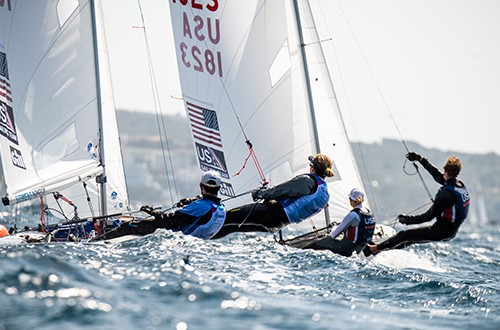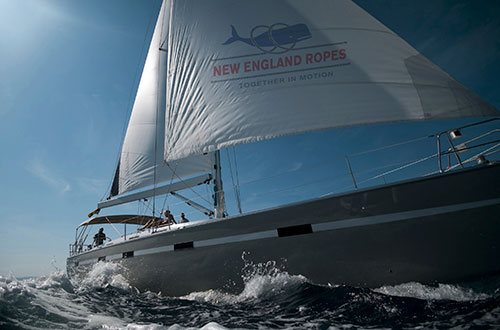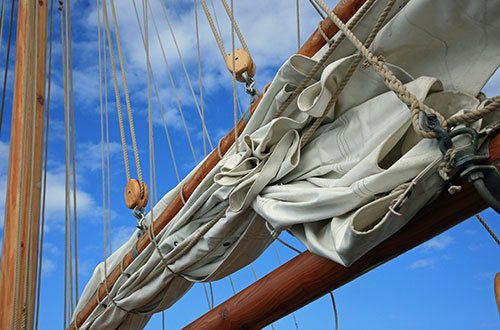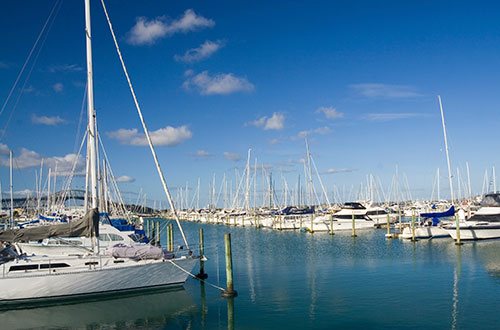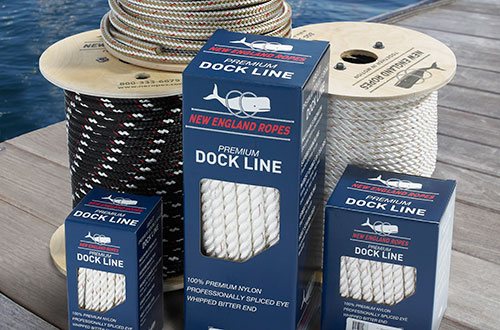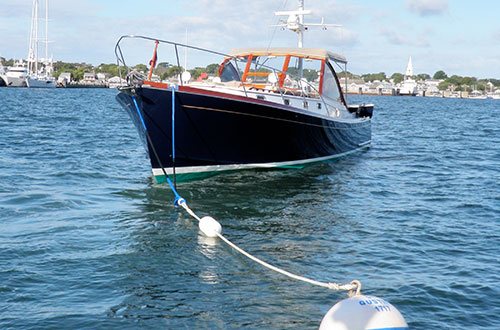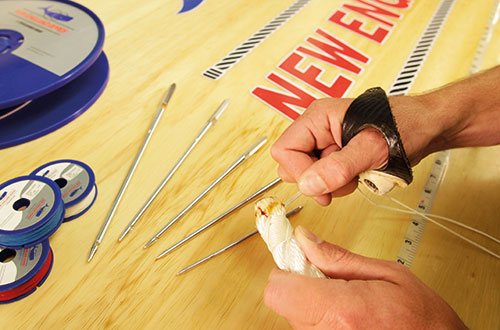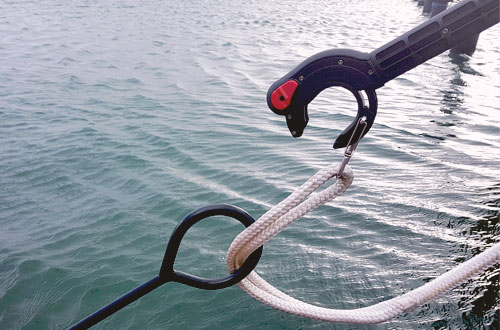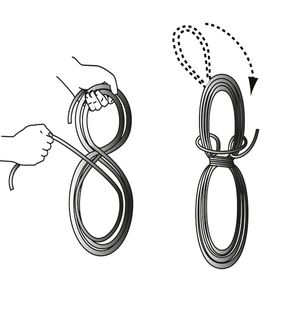
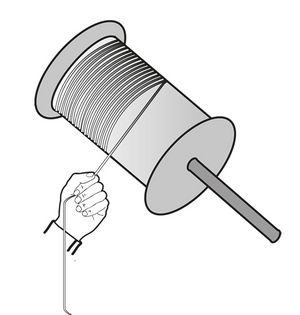
Broom Handle
Pull line from reel directly, not form side.
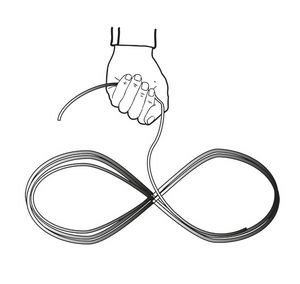
To avoid kinking, coil line in a figure eight for storage or take on deck.
Line Care
In order to prolong the service life of your lines, we recommend that you observe the following instructions:
Storage
- Always keep the ropes in a clean and dry place.
- Avoid exposing them to direct sunlight and extreme temperatures.
- Do not drag ropes over rough surfaces or dirty grounds, as dirt can penetrate between the fibers and cause abrasion damage.
- Always keep ropes away from chemicals. If you plan to keep the ropes in storage for extended periods of time, wash them first in fresh water. Salt and dirt will reduce a rope's life span.
Coiling up of ropes
- 3-strand ropes of any type could be damaged if they are taken off a coil the wrong way.
- Avoid kinks that would open up the 3 strands and compromise the integrity of the rope.
- Braided ropes may get twisted by incorrect handling.
- The ideal method to coil up a braided rope is in the form of a figure 8. This avoids putting twist in the rope and will ensure its optimal running behavior when using it again.
- When using a reel with a braided rope, make sure that it runs freely on a central axle. This helps avoid twists and kinks in the rope.
Sheaves, blocks
- Ropes used around sheaves will experience a reduction in strength and lifetime.
- We suggest that you use a sheave diameter which is approx. 8-9 times the rope diameter. The use of V-profile sheaves should be avoided as they compress the rope and cause local friction thus shortening the rope's lifetime.
Winches
- The requirements for ropes used on winches differ from those for ropes only used on cleats.
- It is important to understand that some cover constructions are not designed to be used on abrasive winch drums, as they would degrade rapidly.
Chemicals
- Exposure to chemicals may cause synthetic fiber ropes to deteriorate or be damaged which may lead to a considerable loss in strength of a rope.
- Impregnating a rope with unauthorized products may alter the properties of the treated rope.
- We recommend to refrain from using any solvents or other conventional cleaning products.
- When in doubt, please contact your New England Ropes dealer.
Heat
- Exposure to temperatures above 40° C may change the properties of a rope temporarily or even permanently. In some cases, such changes can be positive, e.g., changes brought about by pre-stretching or heatsetting processes.
- In most cases high temperatures lead to adverse consequences that reduce the strength of the rope. Be sure to avoid any exposure to punctual heat sources.
Heat generated by friction
- When using a rope on a winch, it may happen that friction-induced heat causes fibers of the rope to melt. This can compromise the rope's performance. Some ropes are specifically designed to withstand extensive friction and the heat generated by it – your dealer will be happy to assist you in finding the right product for your specific application.
UV rays
- Ultraviolet rays may affect the quality and lifetime of synthetic fiber ropes.
- It is imperative to limit the exposure of ropes to sunlight to a minimum, if possible.
- Ropes with smaller diameters are affected more severely than larger diameter ropes.
Abrasion
- Contact with abrasive surfaces or sharp edges will generally lead to damage on the rope.
- Avoid having ropes run across any type of non-movable surfaces, unless they were designed for this purpose (e.g. rings). It is also important to avoid any situations where ropes will come into contact with sand, dirt, and other abrasive particles. The damage caused by this in a rope's interior may not be visible from the outside. However, it may significantly reduce the rope's strength.
Used rope
- Soaking the section of used rope to be spliced in water will loosen and lubricate the fibers and make the splice easier to perform. Through use and exposure to the elements, the fibers in a used rope have probably lost some of their original strength.
- In addition, some shrinkage has probably occurred making this splice the most difficult to perform.
Line Handling

To avoid kinking, coil line in a figure eight for storage or take on deck.

Broom Handle
Pull line from reel directly, not form side.




